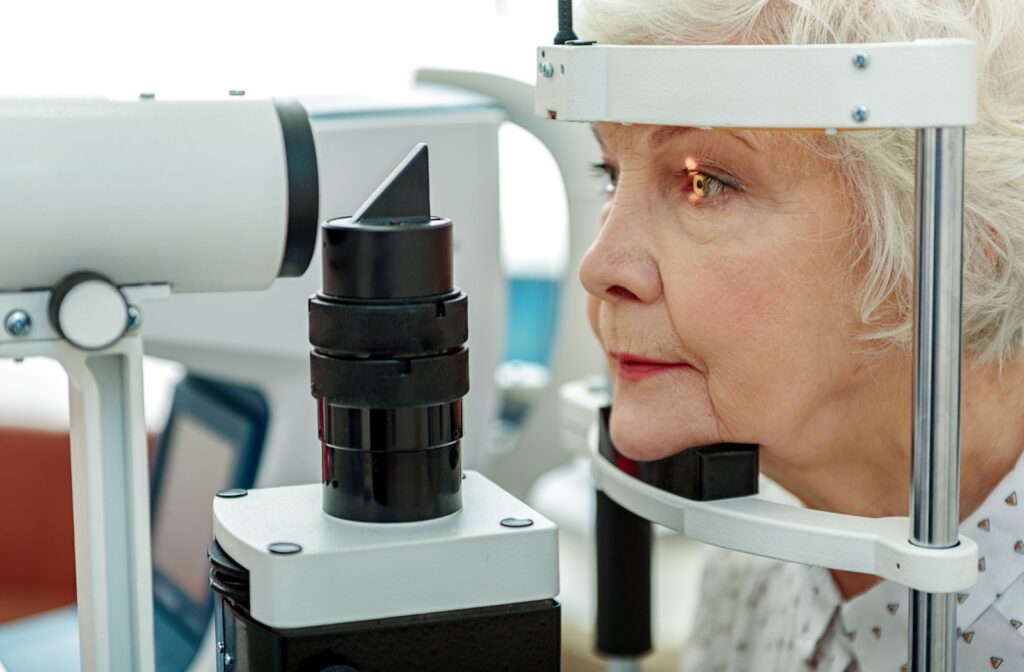Glaucoma is often referred to as the “silent thief of sight” because it can develop gradually, with many people unaware of its presence until significant vision loss has occurred. Understanding the stages of glaucoma is crucial for early detection and treatment, which can help preserve your vision and improve your quality of life.
There are generally four stages of glaucoma, each with varying degrees of severity and symptoms. These stages are classified based on the amount of damage to the optic nerve and changes in vision:
- Stage 1: Early Glaucoma
- Stage 2: Moderate Glaucoma
- Stage 3: Advanced Glaucoma
- Stage 4: Severe Glaucoma
Stage 1: Early Glaucoma
At this stage, damage to the optic nerve may have just begun, and there may be no noticeable symptoms, making it difficult for individuals to detect any issues on their own. However, a comprehensive eye exam can reveal important warning signs, such as increased pressure in the eye or subtle indications of optic nerve damage.
These early changes are often only visible to trained professionals using specialized equipment. Treatment at this stage is crucial to prevent the condition from worsening and to preserve vision. By addressing the problem early, individuals can significantly reduce the risk of irreversible vision loss and maintain their quality of life. Regular eye check-ups are key to catching these changes before they become more serious.
Stage 2: Moderate Glaucoma
As glaucoma progresses, there may be mild changes to peripheral vision, which can gradually narrow over time, making it harder to see objects out of the corner of your eye. Some noticeable symptoms may also develop, such as blurred vision, halos or rainbows around lights, eye pain, or difficulty adapting to low-light conditions, especially in dimly lit environments.
At this stage, treatment typically focuses on managing the condition to prevent further damage. This may involve the use of prescribed eye drops or oral medications to lower intraocular pressure. In more advanced cases, surgical options, such as laser therapy or traditional surgery, may be recommended to help reduce eye pressure and slow down damage to the optic nerve, preserving as much vision as possible. Regular monitoring and early intervention remain key to managing glaucoma effectively.
Stage 3: Advanced Glaucoma
At this stage, there is significant damage to the optic nerve, which plays a crucial role in transmitting visual information from the eye to the brain. This damage often leads to noticeable changes in vision that can greatly affect daily life. These changes may include blind spots in central vision, making tasks like reading or recognizing faces more difficult, or trouble focusing on objects, especially in dim lighting.
In some cases, there may even be a complete loss of vision in one eye, which can severely impact depth perception and spatial awareness. Treatment at this stage typically requires more aggressive interventions, such as laser therapy to reduce pressure in the eye or surgery to halt further damage and preserve remaining vision. Early detection and consistent follow-up care are critical to managing the condition effectively.
Stage 4: Severe Glaucoma
In the final stage of glaucoma, the optic nerve sustains severe and irreversible damage, leading to complete loss of vision. At this advanced stage, treatment options no longer aim to restore sight but rather focus on managing symptoms and improving the individual’s quality of life. This may involve the use of low-vision aids such as magnifiers, screen readers, or voice-activated devices to help maintain independence in daily activities.
Counseling and psychological support play a crucial role in assisting individuals to cope emotionally with the challenges of living with blindness. Additionally, connecting patients to support services, such as mobility training or specialized rehabilitation programs, can help them adapt to their new circumstances and lead fulfilling lives despite their condition.

The Importance of Early Intervention
While glaucoma is a progressive and irreversible condition, early detection and treatment can significantly slow down its progression and preserve vision. Regular eye exams are essential for detecting changes in vision or eye pressure that may indicate the onset of glaucoma. This is especially important for individuals over 60 years old, those with a family history of glaucoma, and individuals with other risk factors such as diabetes or high blood pressure.
Furthermore, leading a healthy lifestyle, including regular exercise and a balanced diet, can also help prevent or delay the onset of glaucoma. Managing underlying conditions like diabetes and hypertension can also reduce the risk of developing glaucoma.
Early Detection & Management of Glaucoma at Total Vision Novato
While there is currently no cure for glaucoma, early detection and management can significantly improve outcomes and prevent vision loss. It is essential to prioritize regular eye exams and adopt healthy lifestyle habits to protect against this potentially devastating condition.
At Total Vision Novato, our team of experienced optometrists offers comprehensive eye exams to detect and manage glaucoma at its earliest stages. If you or a loved one are at risk for glaucoma, contact us today to schedule an appointment and take control of your eye health. Early intervention can make all the difference in preserving your vision and maintaining independence in daily activities.




